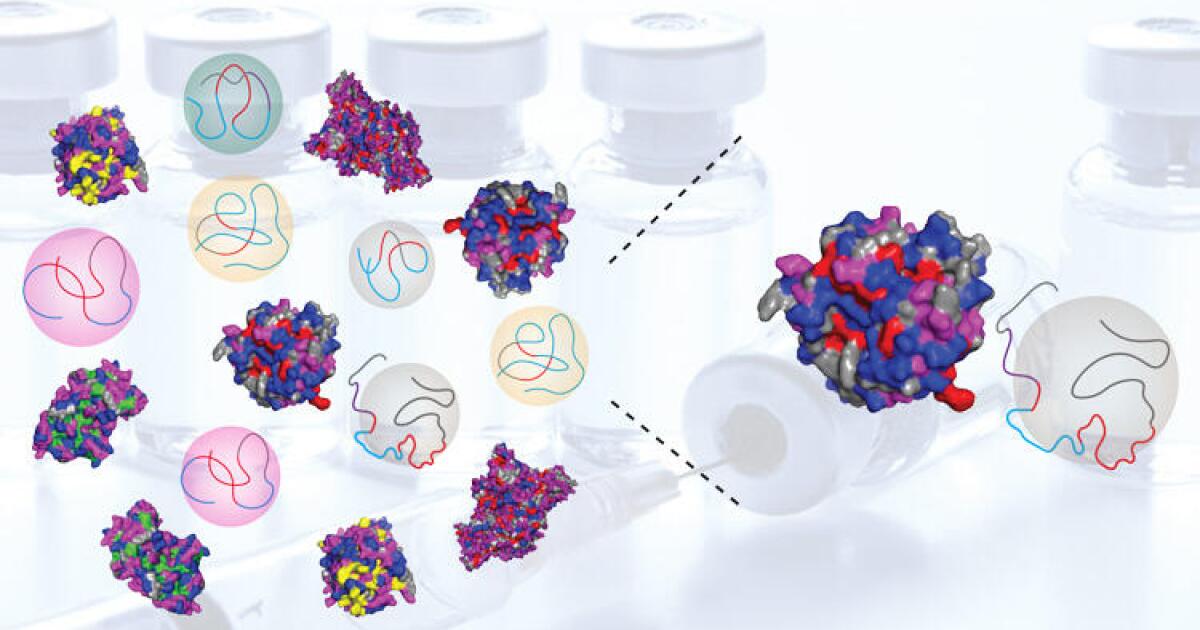[ad_1]

Creating synthetic proteins is a promising avenue of study, but could we take shortcuts on nature’s blueprint and make more efficient versions? Scientists at UC Berkeley have found that simpler combos of synthetic building blocks can make for protein alternatives that work just as well as, and in some cases better than, the real thing.
Although hundreds of types of amino acids exist, natural selection has picked 20 that can be found in every living organism on Earth. This core set combines together into hundreds of thousands of different variations to create every protein in your body.
In recent years scientists have been experimenting with creating artificial proteins, making strides towards treating diseases like Alzheimer’s and malaria. These are usually made by trying to replicate the complex structures and recipes that nature has cooked up over billions of years – but is that really the most efficient method?
In the UC Berkeley study, scientists investigated much simpler synthetic substitutes. First they trained AI systems on a database of about 60,000 natural proteins. Then the AI is tasked with figuring out how to recreate specific properties and functions of proteins from only a handful of “building blocks” – monomers currently used in plastics.
Rather than using all 20 amino acids found in natural proteins, the team found that the AI could choose the right number, type and arrangement of monomers to recreate functioning proteins using just two, four or six building blocks. They called their protein substitutes random heteropolymers (RHPs).
In one experiment, the researchers created an artificial blood plasma using RHPs that were specially designed to dissolve and stabilize natural protein biomarkers in blood. Not only could this fluid preserve them without refrigeration, but it managed to improve on the natural stuff by helping the proteins survive higher temperatures.
While it might sound like taking shortcuts would lead to an inferior product, the team says the technique is about removing inactive “junk” that accumulates in proteins after billions of years of trial and error.
“Nature doesn’t do a lot of bottom-up, molecular, precision-driven design like we do in the lab,” said Ting Xu, lead author of the study. “Nature needs flexibility in order to get where it is. Nature doesn’t say, let’s study the structure of this virus and make an antigen to attack it. It’s going to express a library of antigens and from there pick the one that works.”
Importantly, the artificial plastic RHPs work right alongside biological systems without causing trouble. In another test, the researchers created artificial cytosol, the fluid inside cells, and found that the natural protein-producing ribosomes continued to do their work as usual, even in the artificial fluid.
“Basically, all the data shows that we can use this design framework, this philosophy, to generate polymers to a point that the biological system would not be able to recognize if it is a polymer or if it is a protein,” said Xu. “We basically fool the biology. The whole idea is that if you really design it and inject your plastics as a part of an ecosystem, they should behave like a protein. If the other proteins are like, ‘Okay, you are part of us,’ then that’s OK.”
While there’s still plenty of work left to do, the team says that RHPs could eventually help make for more biocompatible materials, such as implants, or better drug delivery systems.
The research was published in the journal Nature.
Source: UC Berkeley
[ad_2]
Source link
